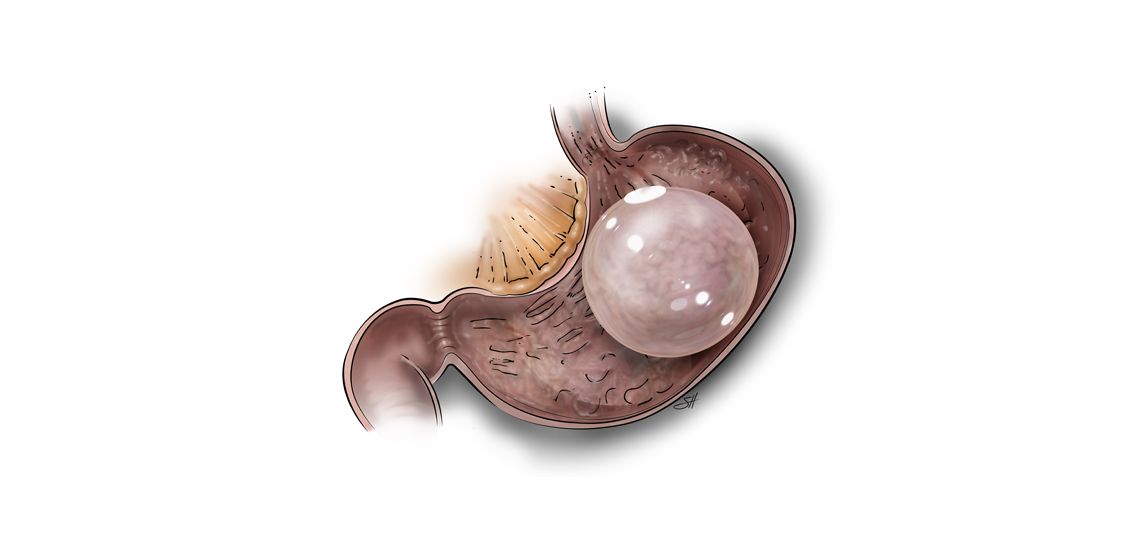About intragastric balloons
The weight loss balloon (also called the intragastric balloon) is a simple, non-surgical outpatient procedure. Gastric balloons are an option for people who need to lose weight but do not qualify for weight loss surgery. The weight loss balloon may also be recommended for patients who need to lose weight to reduce surgical risks before a complex operation.
These balloons are placed through the endoscope, as an outpatient procedure. Patients who have a gastric balloon placed must commit to a 12-month healthy lifestyle plan, including diet and regular exercise, to maintain weight loss long term.
Advantages of the gastric balloon
- Does not require surgery
- Simple and quick to place
- Average weight loss is 20 to 50 pounds
- Reduced desire to eat
- Temporary and completely reversible
Who Is the weight loss balloon procedure for?
Patients who qualify for the gastric balloon procedures have a BMI of 30-40 and must not have had prior weight loss surgery. The gastric balloon is most suitable for patients who need to lose around 30% of their excess body weight. The gastric balloon is also used to help patients lose weight before a more invasive bariatric surgical procedure.
Weight loss balloon procedure
During the gastric balloon procedure, a diagnostic endoscopy (a small camera inserted through your mouth into the esophagus and stomach) is done to ensure that that it is safe to perform the procedure. The soft silicone deflated balloon is inserted orally, either by ingesting a pill or under endoscopy (a tiny camera inserted down your esophagus with the deflated balloon). Once the weight loss balloon has been filled with saline it expands to about the size of a grapefruit. The entire procedure takes about 20 to 30 minutes. After around two hours of recovery, most patients are discharged home.
Weight loss with gastric balloon
The main effect of the balloon is that it slows the passage of food and liquid through the stomach, while also making the patient feel full quicker because of the space it occupies in the stomach. The average stomach is approximately 1.5L in volume, and so the average balloon (filled to 650 mL) reduces the volume of the stomach by less than 50%.
The weight loss balloon is placed in the stomach for six months, after which it is removed, but the patient continues to follow up for 6 more months, such that the program is a total of 12 months long. Patients must be willing to follow a 12-month managed weight-loss program — beginning with the placement of the balloon and continuing for six months after it is removed. On average, a person loses three times more weight with the weight loss balloon than with diet and exercise alone.
Health benefits of gastric balloon
- Can help patients lose weight if they have not had success with diet and exercise alone
- Improvements in weight-related conditions like diabetes, hypertension, heart disease, and joint pain
Possible complications of gastric balloon
The gastric balloon procedure carries a low risk of complications. Many patients experience nausea, vomiting, and discomfort for a few days after the procedure but these problems rarely persist in the long term. Acid reflux is also common.
In rare cases, patients can experience:
- Perforation or deflation of the balloon causing leakage
- Acute pancreatitis








 Credit
Credit
